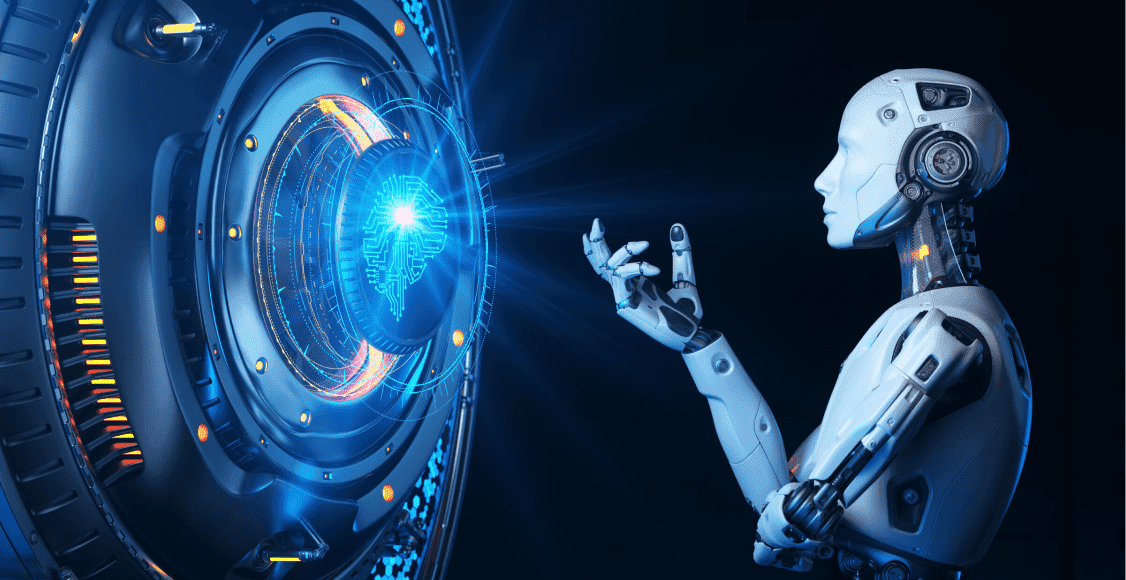Understanding AI Cybersecurity: The New Frontier of Digital Defense
The Rise of AI: How Machine Learning is Shaping Cybersecurity
In the rapidly evolving landscape of digital threats, traditional cybersecurity methods often fall short. The complexity and sheer volume of cyberattacks necessitate a more dynamic approach. Enter Artificial Intelligence (AI), a game-changing technology that is fundamentally altering how organizations defend against cyber threats. Machine learning, a subset of AI, allows systems to learn from data patterns and improve their performance over time without explicit programming. This capability equips cybersecurity tools with the agility needed to combat sophisticated attacks, which are becoming increasingly automated and intelligent. For instance, AI algorithms can analyze vast datasets from network traffic and user behavior, allowing them to identify anomalies that may signify a breach or an attempted attack.
The utilization of AI in cybersecurity is not merely an enhancement; it represents a paradigm shift. Traditional cybersecurity measures rely heavily on predefined rules and static signatures to detect threats. However, as cybercriminals adapt their tactics, these methods become ineffective. Machine learning models are specifically designed to adapt and evolve, learning from new threats promptly and accurately. This adaptability not only helps in mitigating risks but also enables cybersecurity measures to anticipate future attacks based on emerging trends. The result is a proactive approach rather than a reactive one, which can significantly improve an organization’s security posture.
Decoding Cyberthreats: AI’s Ability to Predict and Mitigate Risks
The offensive capabilities of cybercriminals are evolving, employing tactics that leverage AI to launch attacks at scale with increased precision. AI’s predictive capabilities play a crucial role in counteracting these threats. By leveraging historical data, machine learning algorithms can identify patterns and relationships that humans would likely miss. This predictive functionality can identify potential vulnerabilities before they are exploited, enabling organizations to strengthen their defenses proactively.
AI-driven threat intelligence platforms can aggregate and analyze data from various sources, including past incidents, operational data, and emerging vulnerabilities. This compilation of knowledge allows organizations to stay ahead of potential risks. For example, AI can predict the likelihood of certain types of attacks based on current geopolitical events or industry-specific vulnerabilities, making organizations more aware of their risk profiles. Furthermore, through advanced behavioral analytics, AI systems can learn what typical user behavior looks like and identify deviations from the norm that may indicate compromised accounts or insider threats.
Innovative Technologies: AI Tools Reshaping the Cybersecurity Landscape
From Firewalls to Smart Networks: The Evolution of AI-Powered Protection
The foundation of digital security has historically rested on firewalls and antivirus software. While these tools remain fundamental, they have evolved into more sophisticated systems powered by AI. Modern firewalls equipped with AI capabilities now possess features such as deep packet inspection, which analyzes data packets beyond just their headers to scrutinize the contents for potential threats. Intelligent firewalls can adjust their filtering based on real-time analysis of ongoing cyber threats, customizing their settings according to the context of the data flowing through them.
Smart networks, or AI-driven networks, represent another pivotal innovation. They integrate machine learning algorithms to automate and optimize network management tasks such as traffic distribution, threat detection, and policy enforcement. This integration fosters seamless communication between various network components, enabling them to respond in real time to potential security breaches. As a result, organizations can benefit from enhanced visibility and control over their network landscape, directly reducing their vulnerability to attacks.
Automating Threat Detection: How AI is Faster and Smarter Than Ever
One of the most significant advancements AI brings to cybersecurity is automation in threat detection. Traditional methods of identifying threats often involve manual checks, which are not only time-consuming but may also fail to catch emerging threats due to human oversight. AI-powered anomaly detection systems, however, operate at lightning speed, continuously scanning and analyzing vast volumes of data to identify deviations from established baselines. This rapid response capability is invaluable in today’s fast-paced digital world, where cyber threats can emerge and escalate in the blink of an eye.
Moreover, the automation of incident response processes also means that organizations can minimize the time taken between threat identification and remediation. AI can facilitate real-time decision-making, allowing cybersecurity teams to respond swiftly and effectively to mitigate damage and restore normal operations. For instance, if an AI-based system detects unusual login attempts, it can automatically lock affected accounts and escalate the incident to security personnel for further investigation, thereby minimizing the risk of data breaches.
Real-world Applications: AI Cybersecurity in Action
Case Studies: Businesses Leveraging AI to Thwart Cyber Attacks
Numerous organizations across various sectors have begun implementing AI technologies to enhance their cybersecurity frameworks. For instance, a multinational financial services company employed AI-driven algorithms to analyze customer transaction patterns. This allowed them to detect fraudulent activities that significantly deviated from the norm. Since the implementation of AI, the company reported a sharp decrease in both successful and attempted fraud cases, saving millions in potential losses and bolstering customer trust in their security measures.
Another compelling example comes from the healthcare sector, where organizations have increasingly become targets for ransomware attacks. A hospital network adopted AI-powered cybersecurity tools to protect sensitive patient information by constantly monitoring their network for irregular access patterns. The AI-based system successfully flagged an unauthorized access attempt in real time, allowing the IT team to intervene before sensitive data could be compromised. Such proactive measures not only protect patient information but also ensure compliance with regulatory standards such as HIPAA, which demand stringent data protection protocols.
The Role of AI in Securing Remote Work Environments
The rise of remote work has created new challenges for organizations aiming to safeguard their digital environments. As remote employees connect through various networks and devices, they introduce additional vulnerabilities. AI cybersecurity solutions have stepped into this space to address these challenges effectively. By utilizing AI, organizations can implement sophisticated Identity and Access Management (IAM) systems that analyze user behavior to establish secure access protocols. This means that even if a remote worker uses an insecure Wi-Fi connection, their session can be monitored for anomalies that could suggest a security breach.
Furthermore, AI can bolster the security of Virtual Private Networks (VPNs) utilized by remote teams. AI systems can track data flow and access patterns across the network, adjusting security measures in real time based on user behavior. For instance, if a regular user suddenly accesses sensitive information from an unusual location, the AI system can automatically prompt for additional authentication measures, significantly mitigating the risk of data breaches.
The Future of Cybersecurity: Challenges and Opportunities Ahead
Ethical or Evasive? The Moral Implications of AI in Cyber Defense
As AI continues to permeate the cybersecurity landscape, it also raises essential ethical questions about its use. While machine learning algorithms can be designed to detect and respond to threats, there is a fine line between ethical monitoring and invasive surveillance. Organizations must ensure they develop policies that foster transparency about data collection while safeguarding user privacy. Moreover, potential biases ingrained in AI algorithms need addressing since they can lead to disproportionate targeting of certain groups, raising concerns about equity and fairness in AI deployments.
The balance between utilizing AI for defense against cyber threats while maintaining respect for individual liberties poses a significant challenge for organizations. They must navigate complex legal and social landscapes while also considering user consent and data protection standards. A failure to do so could not only undermine public trust but also invite regulatory scrutiny and potential penalties.
Preparing for Tomorrow: How Companies Can Stay Ahead in the AI Cybersecurity Race
In an era marked by rapid technological advancements and a looming threat landscape, organizations must adopt proactive strategies to stay ahead in the AI cybersecurity race. Continuous investment in AI-driven cybersecurity tools is imperative, but these investments should be coupled with regular training for security teams to ensure they can effectively leverage these technologies. Furthermore, integrating AI into broader organizational practices can foster a culture of cybersecurity awareness among all employees, illustrating that cybersecurity is a shared responsibility rather than the sole domain of IT.
Collaboration is another vital strategy for organizations vying to secure their digital environments. By sharing threat intelligence and participating in broader industry initiatives, organizations can fortify their defenses collaboratively. Alliances among different industries can lead to the development of more robust AI models, informed by diverse data sources and insights. Additionally, organizations must prioritize the agility and scalability of their cybersecurity solutions, enabling them to adapt swiftly to evolving threats.
Ultimately, the intersection of AI and cybersecurity holds a wealth of opportunities that can enhance digital safety for all. By being astute in their approach, organizations can harness the power of AI to not only combat emerging threats but also foster a resilient digital future.







